Last updated: July 18, 2020
Article
Earthen Architecture - Preservation Techniques
“Tumacacori’s preservation will always depend more on a respect and knowledge of the building’s materials and for the place itself, than on a new technological breakthrough. This is the nature of the place and that is the nature of adobe.”
- Historic Architect Anthony Crosby
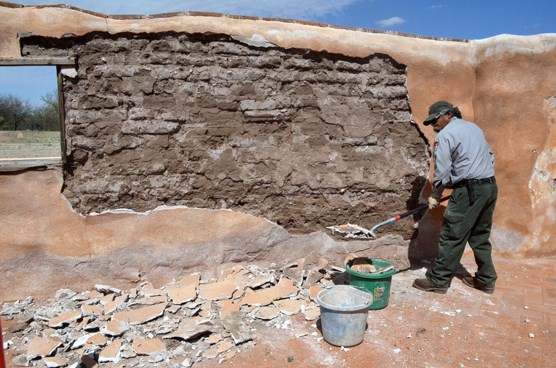
Lime Plaster
Limestone plaster not only provided the missionaries with a smooth, paintable surface for their earthen buildings, it protected the adobe block from moisture. With the passage of time the lime plaster deteriorates and falls away. It must be replaced on a regular basis as this aging process occurs to prevent loss of original adobe construction material. First, the surface of the blocks must be carefully cleaned and prepared before the lime plastering starts. All of the bits and pieces of the old lime plaster must be removed and the adobe blocks thoroughly cleaned of any outside debris before starting the process.
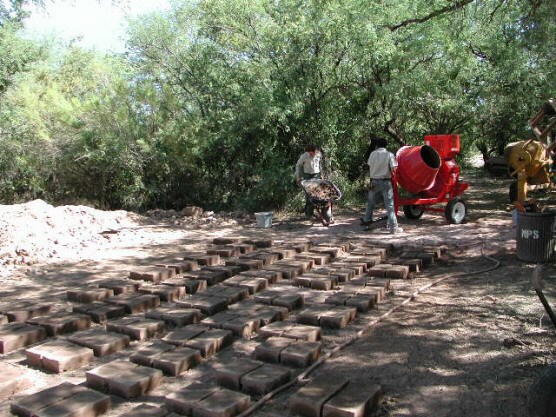
Replacement Adobes
Due to moisture from rainwater wicking up into the adobe blocks at the foundation of the church, and other aging and deteriorating factors, it is necessary to replace some of the adobes from time to time. Although Tumacácori's preservation crew has modern mixers, wheel barrows, and other equipment, it is still a back-breaking process to make the adobe blocks in the traditional wooden molds and stack them for sun drying.
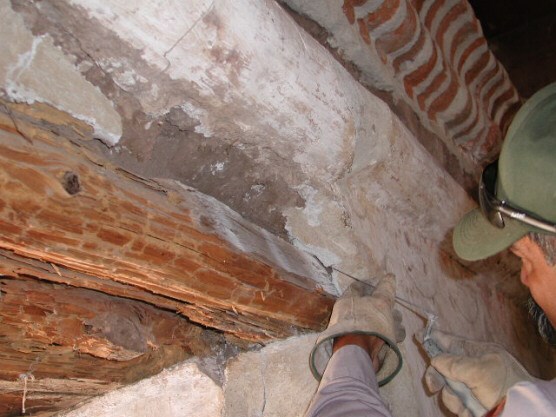
Windows and Door Casings
The original door and window casings of the Tumacácori Mission church were built of wood. As those casings deteriorate from dry rot, termites, and other aging processes, it is necessary to duplicate the originals and replace them, filling in with new lime plaster and sometime portions of the adobe blocks that have fallen away.
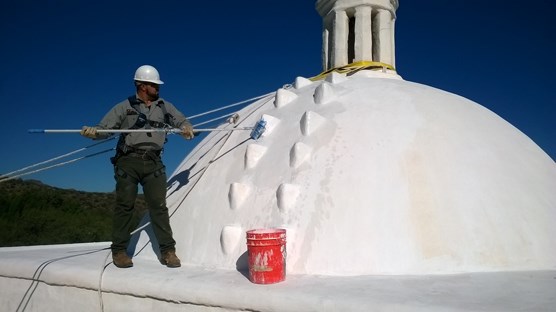
Soap and Alum
While the dome of the Tumacácori Mission church is of burnt adobe construction, the lime plaster still must be repaired and re-coated periodically. The dome's distinctive white color comes from a regular application of soap and alum.
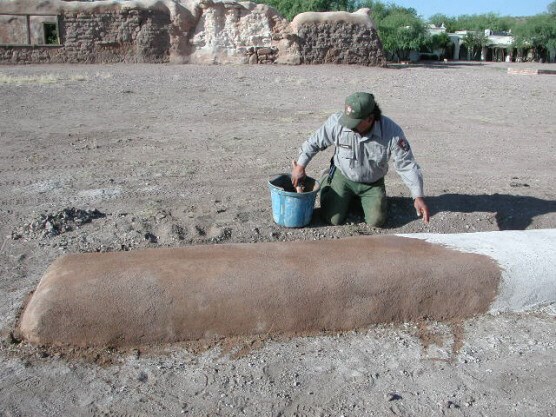
Patinizing
In order to blend new repair work with older projects and original plaster, a stain is applied. Patinizing is an antiquing process applied to the finish that gives it the off-white to buff color of aged lime plaster.
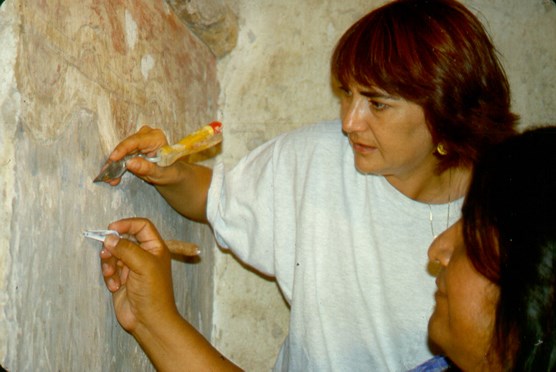
Painted Finishes
Original painted finishes are some of the most valuable and fragile elements of Tumacácori's historic structures. While most of the exterior finishes have weathered away, some still survive under small overhangs and ledges. Interior painted finishes appear in the highest proportion in the sanctuary under the adobe dome of the church. They receive special attention, monitoring, and preservation treatment.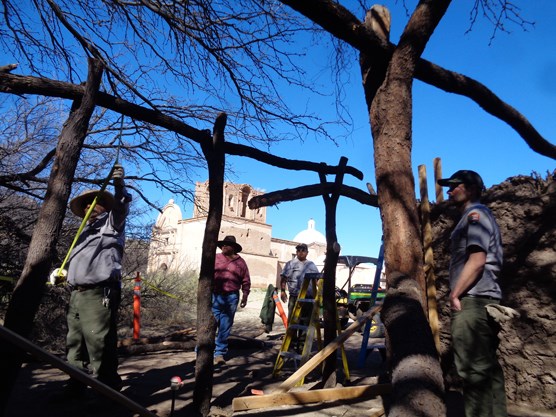
Replica
Tumacácori contracted with representatives of the O'odham Nation in 1997 to build a traditional melhok ki (pronounced moo' rok kee), an O'odham dwelling and its adjoining ramada, both made of mesquite timbers, ocotillo sticks, and mud. The National Park Service did this to so that visitors could see the traditional way in which the O'odham lived prior to the arrival of the Spanish and other Europeans. Once the ki was complete, the park preservation crew took on its maintenance and preservation.
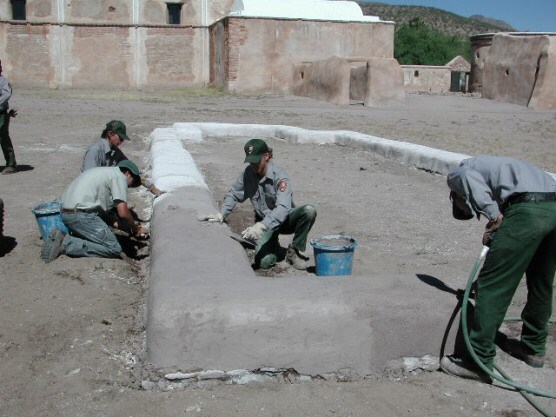
Building From a Footprint
The adobe blocks from the original Jesuit church were removed and used in the construction of the present-day Franciscan church at Tumacácori in the early years of the 19th century. However, the rock foundation of the that first church remains intact today and the Park preservation crew maintains an adobe and lime plaster marker on top of it to indicate where the original church once stood.
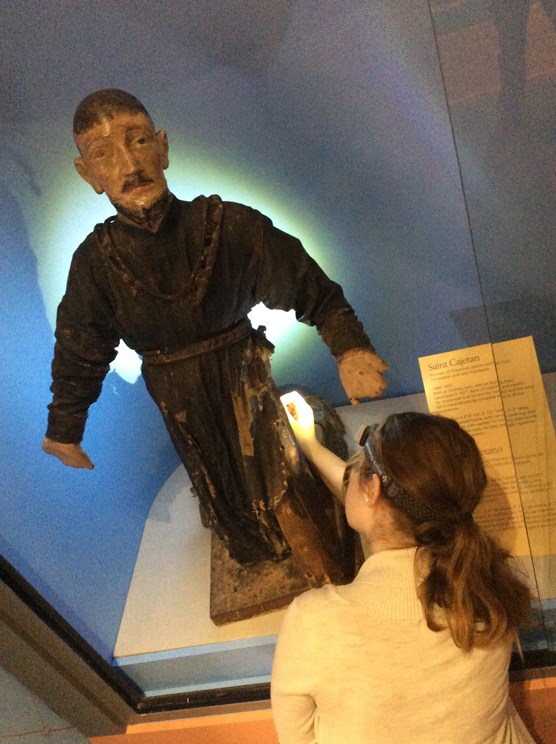
Artifacts
Not all preservation activities occur on buildings. Artifacts like the original wooden santos, now housed in the Tumacácori museum, require special treatment. The materials that make up San Cayetano, for example, include not only wood but paint and fabric as well. Conservators and specialists from the Western Archeological and Conservation Center care for all kinds of museum collection objects, documents, and photographs.
